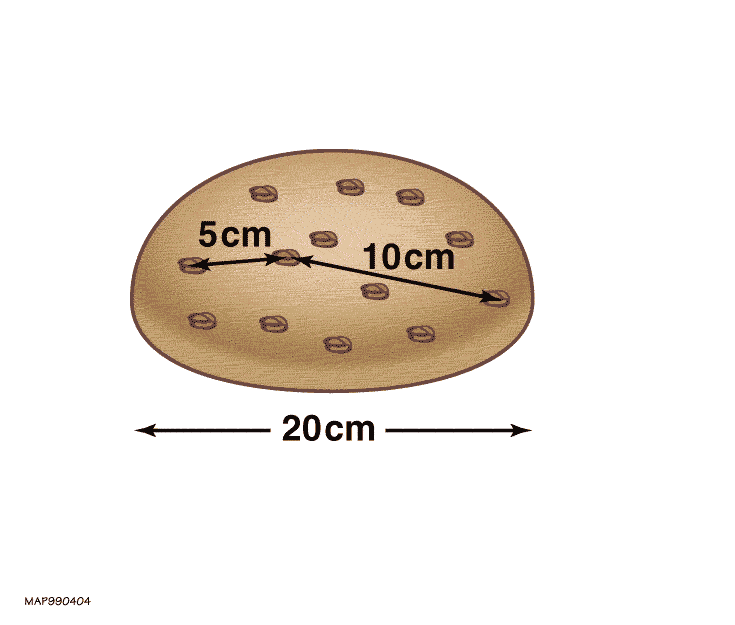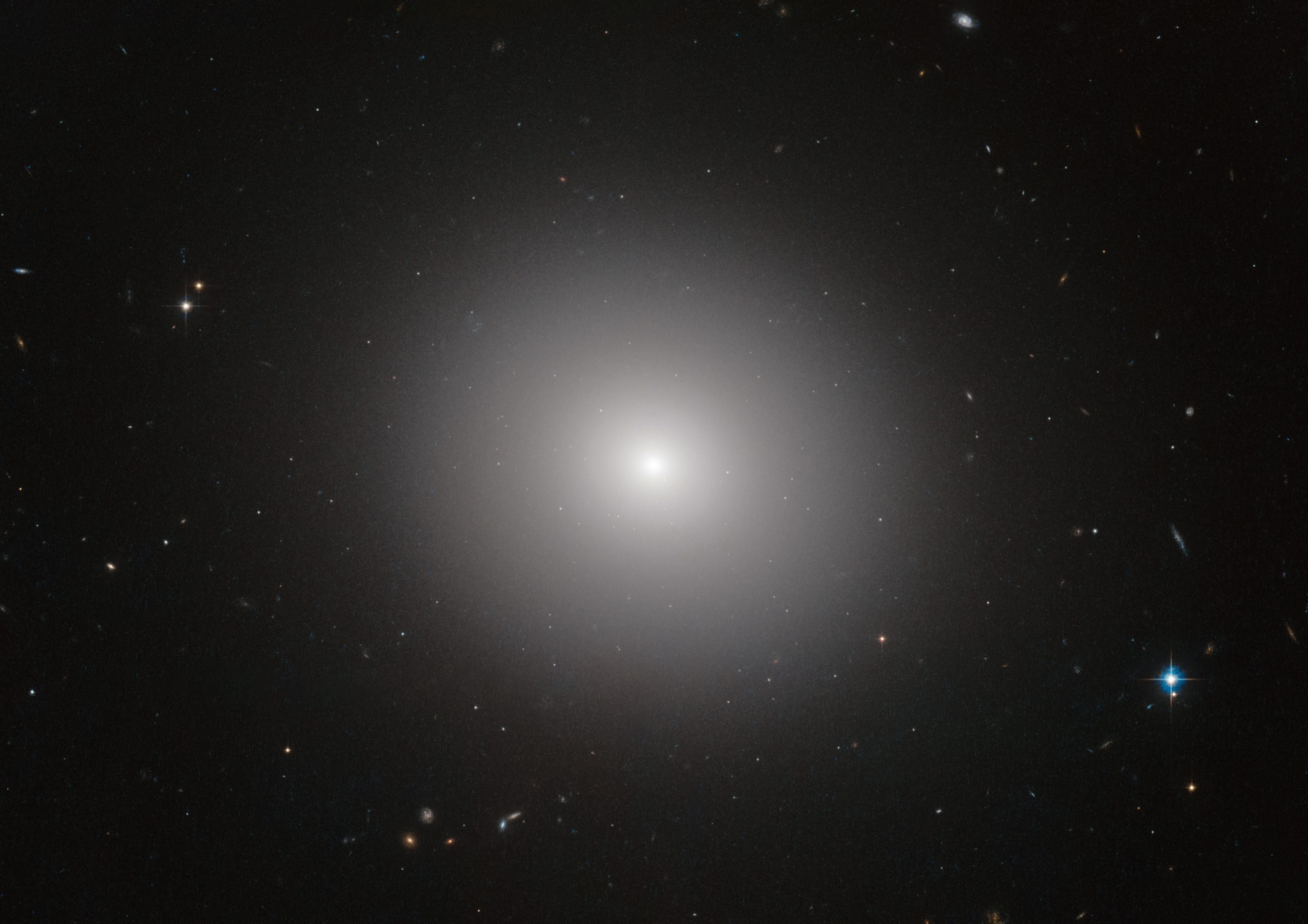|
Hubble–Reynolds Law
The Hubble–Reynolds law models the surface brightness of elliptical galaxies as :I(R) = \frac Where I(R) is the surface brightness at radius R, I_0 is the central brightness, and R_H is the radius at which the surface brightness is diminished by a factor of 1/4. It is asymptotically similar to the De Vaucouleurs' law which is a special case of the Sersic profile for elliptical galaxies. The law is named for the astronomers Edwin Hubble Edwin Powell Hubble (November 20, 1889 – September 28, 1953) was an American astronomer. He played a crucial role in establishing the fields of extragalactic astronomy and observational cosmology. Hubble proved that many objects previously ... and John Henry Reynolds. It was first formulated by Reynolds in 1913 from his observations of galaxies (then still known as nebulae). It was later re-derived by Hubble in 1930 specifically in observations of elliptical galaxies. References Astrophysics Equations of astronomy {{Ast ... [...More Info...] [...Related Items...] OR: [Wikipedia] [Google] [Baidu] |
Hubble's Law
Hubble's law, also known as the Hubble–Lemaître law, is the observation in physical cosmology that galaxies are moving away from Earth at speeds proportional to their distance. In other words, the farther a galaxy is from the Earth, the faster it moves away. A galaxy's recessional velocity is typically determined by measuring its redshift, a shift in the frequency of light emitted by the galaxy. The discovery of Hubble's law is attributed to work published by Edwin Hubble in 1929, but the notion of the universe expanding at a calculable rate was first derived from general relativity equations in 1922 by Alexander Friedmann. The Friedmann equations showed the universe might be expanding, and presented the expansion speed if that were the case. Before Hubble, astronomer Carl Wilhelm Wirtz had, in 1922 and 1924, deduced with his own data that galaxies that appeared smaller and dimmer had larger redshifts and thus that more distant galaxies recede faster from the observer. In ... [...More Info...] [...Related Items...] OR: [Wikipedia] [Google] [Baidu] |
Surface Brightness
In astronomy, surface brightness (SB) quantifies the apparent brightness or flux density per unit angular area of a spatially extended object such as a galaxy or nebula, or of the night sky background. An object's surface brightness depends on its surface luminosity density, i.e., its luminosity emitted per unit surface area. In visible and infrared astronomy, surface brightness is often quoted on a magnitude scale, in magnitudes per square arcsecond (MPSAS) in a particular filter band or photometric system. Measurement of the surface brightnesses of celestial objects is called surface photometry. General description The total magnitude is a measure of the brightness of an extended object such as a nebula, cluster, galaxy or comet. It can be obtained by summing up the luminosity over the area of the object. Alternatively, a photometer can be used by applying apertures or slits of different sizes of diameter. The background light is then subtracted from the measurement to obt ... [...More Info...] [...Related Items...] OR: [Wikipedia] [Google] [Baidu] |
Elliptical Galaxy
An elliptical galaxy is a type of galaxy with an approximately ellipsoidal shape and a smooth, nearly featureless image. They are one of the three main galaxy morphological classification, classes of galaxy described by Edwin Hubble in his Hubble sequence#Physical significance, Hubble sequence and 1936 work ''The Realm of the Nebulae'', with their intermediate scale disks, a subset of the "early-type" galaxy population. Most elliptical galaxies are composed of older, stellar evolution#Low-mass stars, low-mass stars, with a sparse interstellar medium, and they tend to be surrounded by large numbers of globular clusters. Star formation activity in elliptical galaxies is typically minimal; they may, however, undergo brief periods of star formation when merging with other galaxies. Elliptical galaxies are believed to make up approximately 10–15% of galaxies in the Virgo Supercluster, and they are not the dominant type of galaxy in the universe overall. They are preferentially fou ... [...More Info...] [...Related Items...] OR: [Wikipedia] [Google] [Baidu] |
De Vaucouleurs' Law
In astronomy, de Vaucouleurs's law, also known as the de Vaucouleurs profile or de Vaucouleurs model, describes how the surface brightness I of an elliptical galaxy varies as a function of apparent distance R from the center of the galaxy: \ln I(R) = \ln I_ - k R^. By defining ''Re'' as the radius of the isophote containing half of the total luminosity of the galaxy, the half-light radius, de Vaucouleurs profile may be expressed as: \ln I(R) = \ln I_ + 7.669 \left 1 - \left( \frac \right)^ \right or I(R) = I_ e^ where ''Ie'' is the surface brightness at ''Re''. This can be confirmed by noting \int^_0 I(r)2\pi r \, dr = \frac \int^_0 I(r)2\pi r \, dr . De Vaucouleurs model is a special case of Sersic's model, with a Sersic index of . A number of (internal) density profiles that approximately reproduce de Vaucouleurs's law after projection onto the plane of the sky include Jaffe's model and Dehnen's model. The model is named after Gérard de Vaucouleurs Gérard Henri d ... [...More Info...] [...Related Items...] OR: [Wikipedia] [Google] [Baidu] |
Edwin Hubble
Edwin Powell Hubble (November 20, 1889 – September 28, 1953) was an American astronomer. He played a crucial role in establishing the fields of extragalactic astronomy and observational cosmology. Hubble proved that many objects previously thought to be clouds of dust and gas and classified as "nebulae" were actually Galaxy, galaxies beyond the Milky Way. He used the strong direct period-luminosity relation, relationship between a classical Cepheid variable's luminosity and periodic function, pulsation period (discovered in 1908 by Henrietta Swan Leavitt) for scaling cosmic distance ladder, galactic and extragalactic distances. Hubble confirmed in 1929 that the recessional velocity of a galaxy increases with its distance from Earth, a behavior that became known as Hubble's law, although it had been proposed two years earlier by Georges Lemaître. The Hubble law implies that the universe is expanding. A decade before, the American astronomer Vesto Slipher had provided the fi ... [...More Info...] [...Related Items...] OR: [Wikipedia] [Google] [Baidu] |
John Reynolds (astronomer)
John Henry Reynolds (1874–1949) was a British astronomer who served as the president of the Royal Astronomical Society between 1935 and 1937 and is known for his work on the classification of stellar bodies. An amateur, he was the son of Alfred John Reynolds, the Lord Mayor of Birmingham, who owned a company which cut nails. In 1899, at age 25, he was elected a Fellow of the Royal Astronomical Society and in 1907, he financed the construction of a 30-inch reflecting telescope in Helwan, Egypt, the first large telescope to study objects in the such southerly skies. He also hand-constructed a 28-inch telescope in Harborne. Images from the Reynolds telescope was later used by Gérard de Vaucouleurs in his system of classifying galaxies; Reynolds also published his own classification for spiral galaxies in 1920. Edwin Hubble frequently corresponded with Reynolds, and some of his findings into the classification of stellar bodies seems at least inspired by his work. The Hubble–Reyno ... [...More Info...] [...Related Items...] OR: [Wikipedia] [Google] [Baidu] |
Astrophysics
Astrophysics is a science that employs the methods and principles of physics and chemistry in the study of astronomical objects and phenomena. As one of the founders of the discipline, James Keeler, said, astrophysics "seeks to ascertain the nature of the heavenly bodies, rather than their positions or motions in space—''what'' they are, rather than ''where'' they are", which is studied in celestial mechanics. Among the subjects studied are the Sun ( solar physics), other stars, galaxies, extrasolar planets, the interstellar medium, and the cosmic microwave background. Emissions from these objects are examined across all parts of the electromagnetic spectrum, and the properties examined include luminosity, density, temperature, and chemical composition. Because astrophysics is a very broad subject, ''astrophysicists'' apply concepts and methods from many disciplines of physics, including classical mechanics, electromagnetism, statistical mechanics, thermodynamics, quantum ... [...More Info...] [...Related Items...] OR: [Wikipedia] [Google] [Baidu] |



